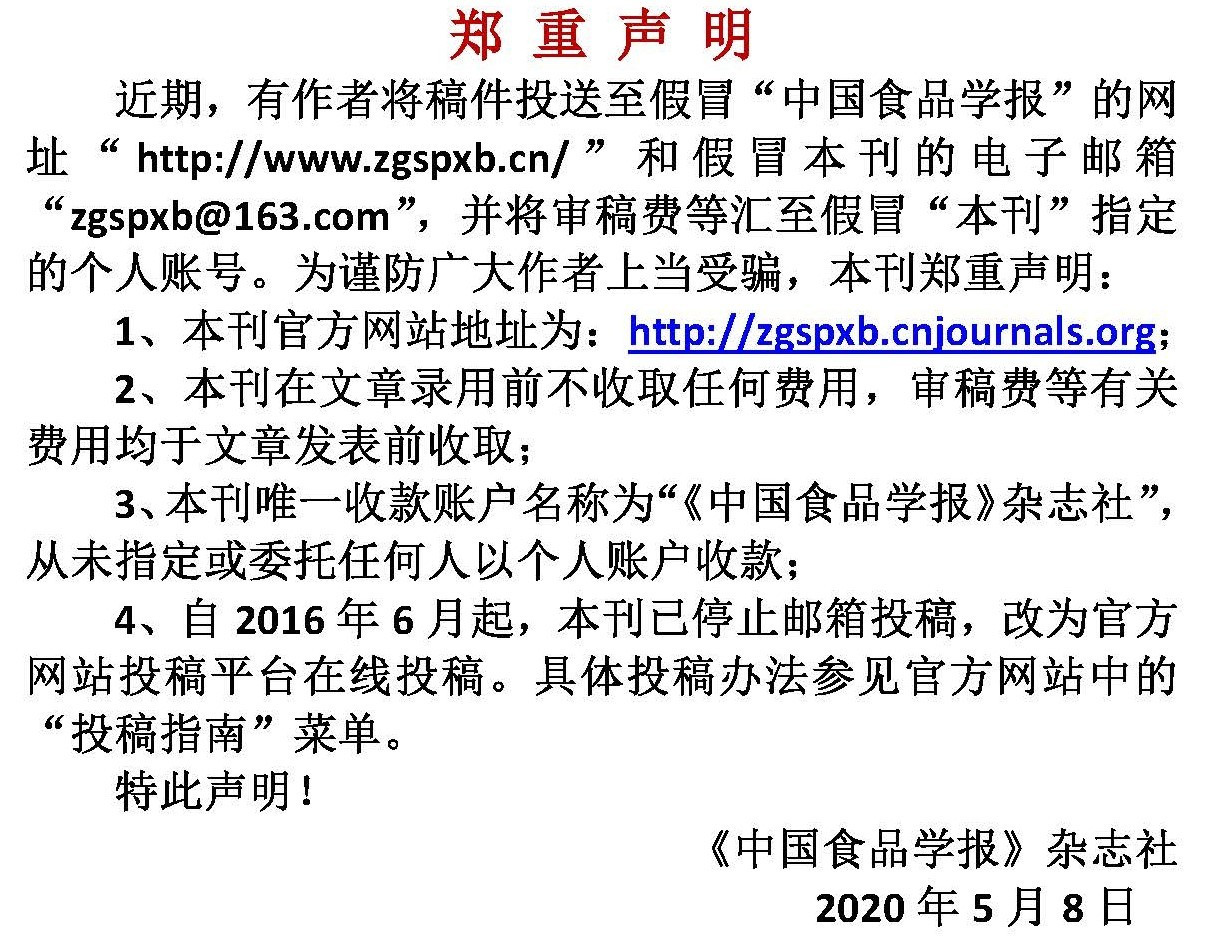微波预处理对大豆分离蛋白结构及凝胶性的影响
作者:
作者单位:
(1.中国农业大学食品科学与营养工程学院 北京 100083;2.山东万得福生物科技有限公司 山东东营 257500)
作者简介:
通讯作者:
中图分类号:
基金项目:
山东省重点研发计划项目(2022CXGC010602)
Effect of Microwave Pretreatment on the Structure and Gelation of Soy Protein Isolate
Author:
Affiliation:
(1.College of Food Science and Nutritional Engineering, China Agricultural University, Beijing 100083;2.Shandong Wonderful Biotech Co., Ltd., Dongying 257500, Shandong)
Fund Project:
引用本文
华晓晗,栾慧琳,武岳,贾鑫,于文华,殷丽君.微波预处理对大豆分离蛋白结构及凝胶性的影响[J].中国食品学报,2025,25(3):286-296
复制相关视频
分享
文章指标
- 点击次数:
- 下载次数:
- HTML阅读次数:
历史
- 收稿日期:2024-03-25
- 最后修改日期:
- 录用日期:
- 在线发布日期: 2025-05-23
- 出版日期:
文章二维码

版权所有 :《中国食品学报》杂志社 京ICP备09084417号-4
地址 :北京市海淀区阜成路北三街8号9层 邮政编码 :100048
电话 :010-65223596 65265375 电子邮箱 :chinaspxb@vip.163.com
技术支持:北京勤云科技发展有限公司
地址 :北京市海淀区阜成路北三街8号9层 邮政编码 :100048
电话 :010-65223596 65265375 电子邮箱 :chinaspxb@vip.163.com
技术支持:北京勤云科技发展有限公司
